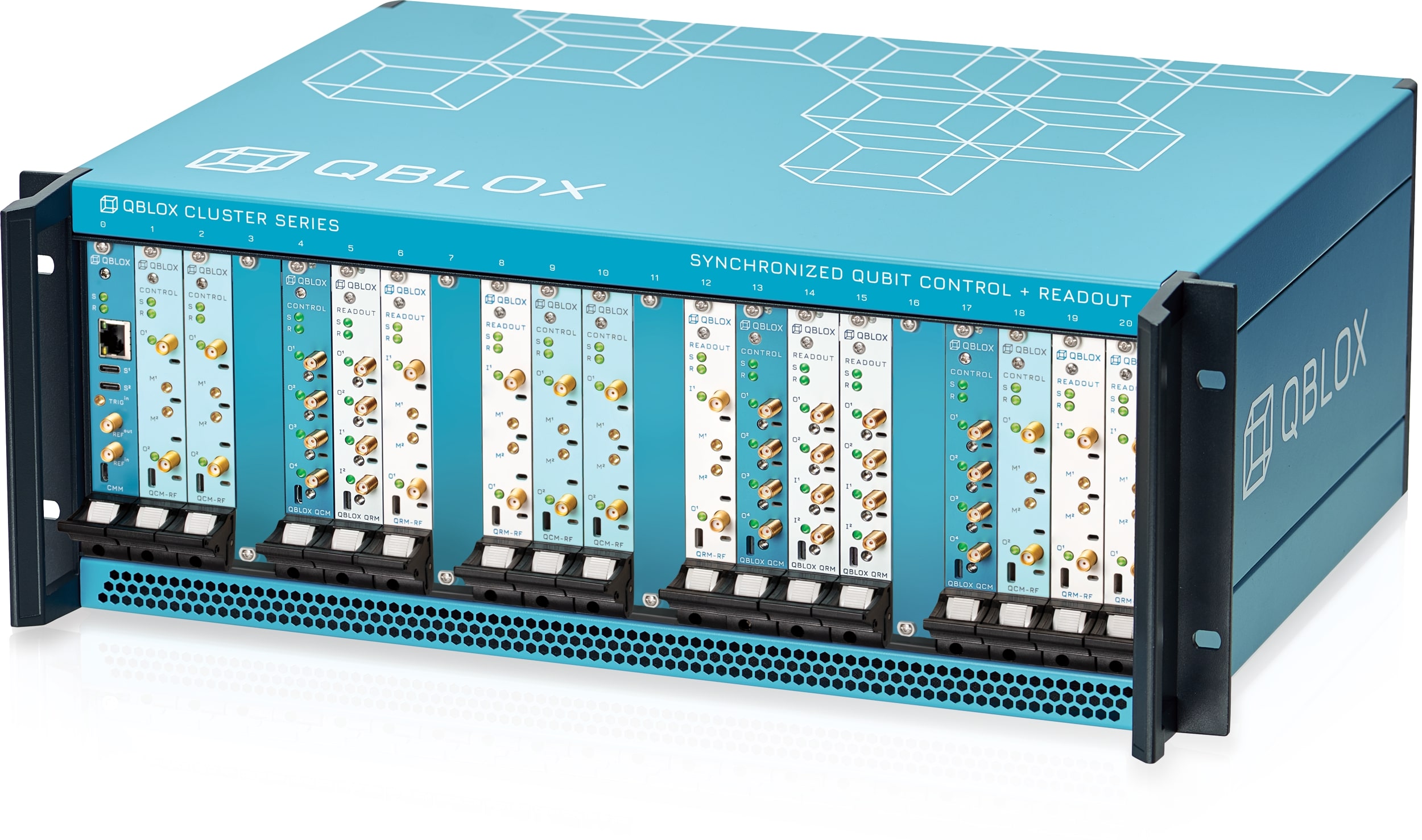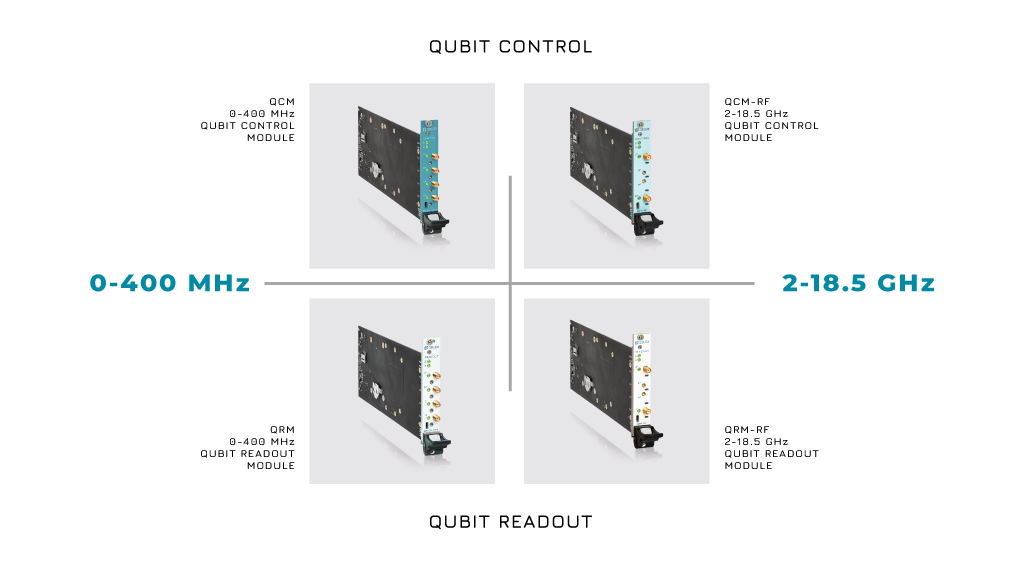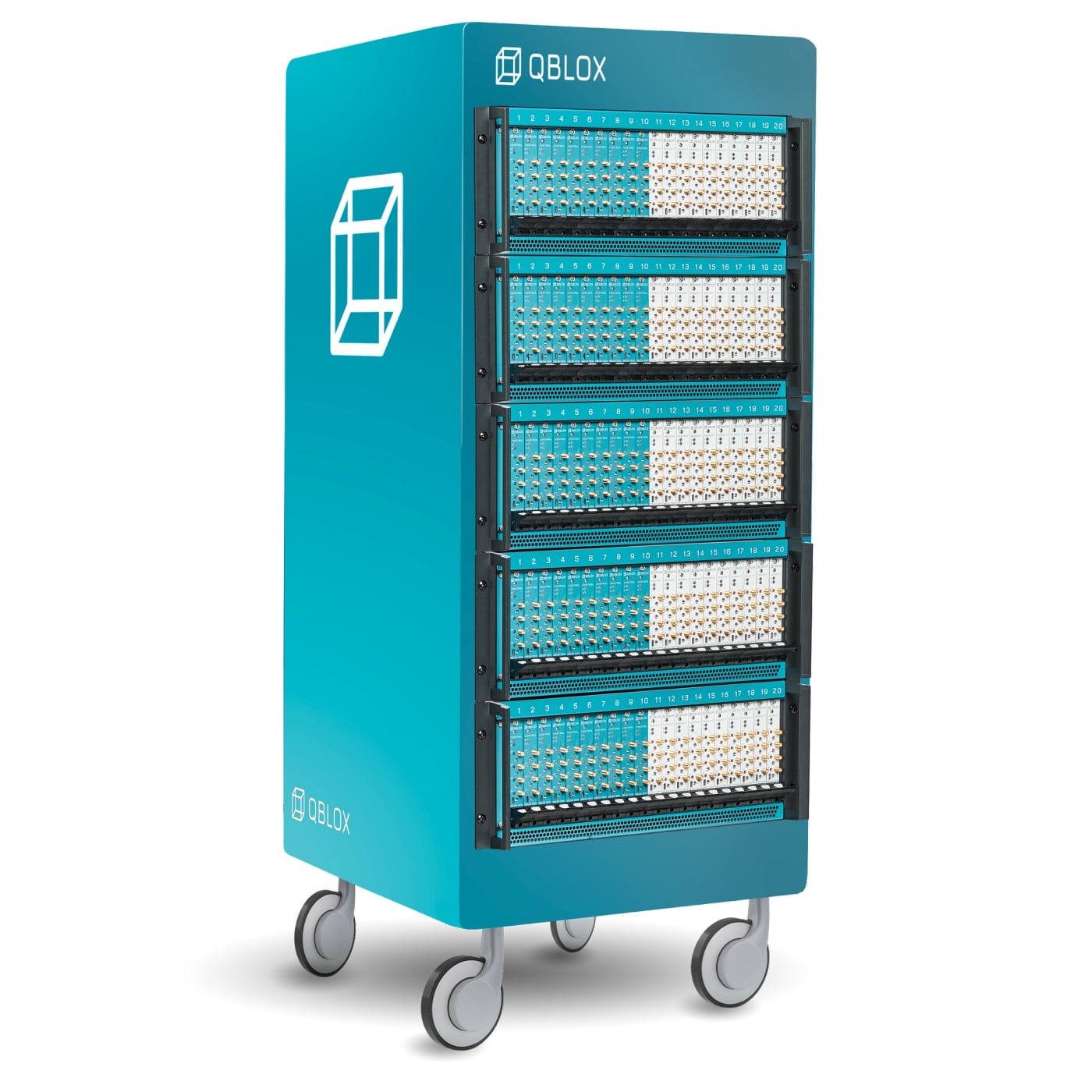Product Overview#
Cluster#

Qblox Cluster is the scalable 19” rack instrument that can be configured with a combination of up to 20 modules that can control and readout qubits over a wide frequency range (up to 18.5 GHz). Each individual Cluster can control around 20 qubits among superconducting qubits, spin qubits & quantum dots, and NV-centers in diamond. The Cluster’s extremely scalable architecture integrates AWGs, local oscillators, analyzers, IQ-mixers, and digitizers. Qblox presents two unique protocols to ensure deterministic timing across all modules (SYNQ) and low-latency feedback with an arbitrary control flow (LINQ).
Each module can either be:
QCM: Qubit Control Module with 4 channel outputs in the baseband regime (0-400 MHz) and 4 digital markers.
QCM-RF: Qubit Control Module with 2 channel outputs in the radio-frequency regime (2-18.5 GHz) and 2 digital markers.
QRM: Qubit Readout Module with 2 channel inputs and 2 channel outputs in the baseband regime (0-400 MHz) and 4 digital markers.
QRM-RF: Qubit Readout Module with 1 channel input and 1 channel output in the radio-frequency regime (2-18.5 GHz) and 2 digital markers.

While pulses are always shaped in the digital (baseband) domain, they are upconverted to relevant qubit drive frequencies in the GHz regime through the analog stage in the RF modules. We also provide tools to reduce local oscillator leakage and calibrate the IQ mixer. Readout works similarly, where readout pulses are sent to the feedline and then collected via the input port of the QRM-RF module. First, the GHz signal is downconverted to the baseband regime and fed into the digital domain via integrated digitizers. Then the signal is analyzed with the onboard processors, allowing real-time integrations, averaging, binning, and storage of 131k measurement results per run.
The Cluster also features a Communication Module (CMM) that allows communication to the host PC via 1 Gbps Ethernet and to the individual modules in the Cluster. Furthermore, multiple Clusters can be daisy-chained via dedicated ports in their respective CMMs to extend synchronization to the multi-Cluster setting. Thanks to the distributed architecture of Qblox technology, this allows massive scalability to 100s of qubits and quantum error correction.
For a list of available features of the Cluster please go to Features.
For an overview of applications please go to Applications
For a description of the modules please go to
Quantify#
To get the most out of your Qblox instruments, we advise installing Quantify, our measurement control package with built-in support for Qblox instruments. Quantify is built on top of QCoDeS and the PycQED measurement environment, and Qblox and Orange Quantum Systems develop and maintain it as an open-source platform.
All the software’s functionality is well-documented in Read-the-Docs. Basic tutorials are given for quick set-up and start of the measurement, whereas advanced sequencing tutorials are also featured for more complex experiments.
Quantify is provided with APIs that can be interfaced at the level of SCPI, python, or QCoDeS. All of the levels are open source, well-documented, and tested in a CI pipeline.
Quantify is compatible with various quantum platforms such as transmons, spin-qubits, or NV-centers and can also be used with any equipment from other vendors that supports QCoDeS drivers. Quantify currently consists of two modules: quantify-core and quantify-scheduler.
Quantify-core#
Quantify-core is the core module that contains all basic functionality to control experiments. Quantify-core includes:
A framework to control instruments.
A data-acquisition loop.
Data storage and analysis.
The ability to monitor parameters and live visualization of experiments.
Quantify-scheduler#
Quantify-scheduler is a Python module for writing quantum programs featuring a hybrid gate-pulse control model with explicit timing control. The control model allows quantum gate- and pulse-level descriptions to be combined in a clearly defined and hardware-agnostic way. Quantify-scheduler is designed to enable experimentalists to define complex experiments easily and produces synchronized pulse schedules to be distributed to control hardware.
QCoDeS#
QCoDeS is a Python-based data acquisition and handling framework designed to facilitate experiments in nanoelectronics, developed by the Copenhagen / Delft / Sydney / Microsoft quantum computing consortium. Quantify and Qblox instruments are tightly integrated with QCoDeS and used to control the hardware parameters.
